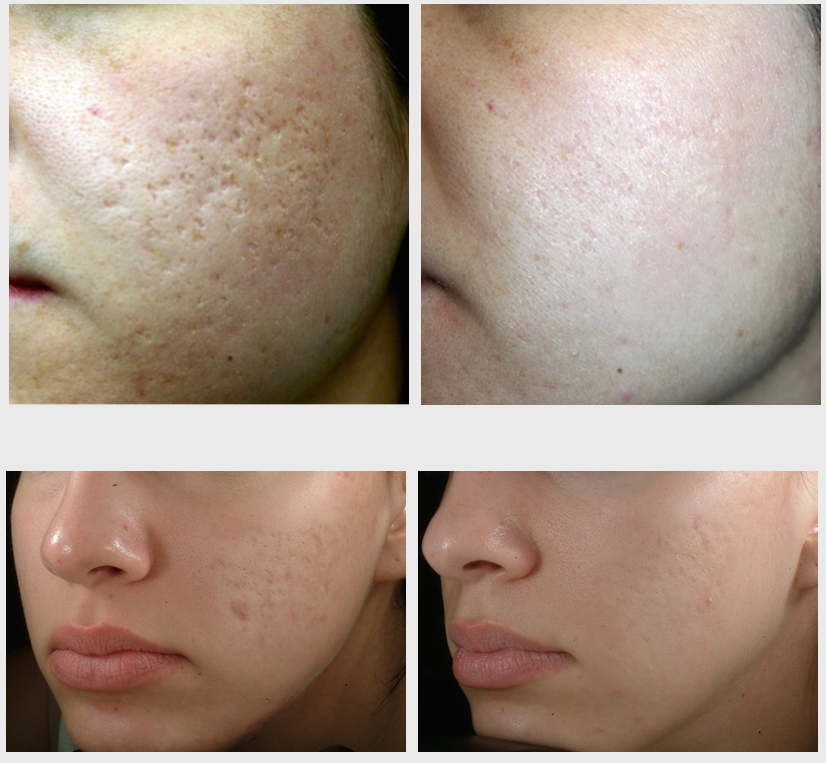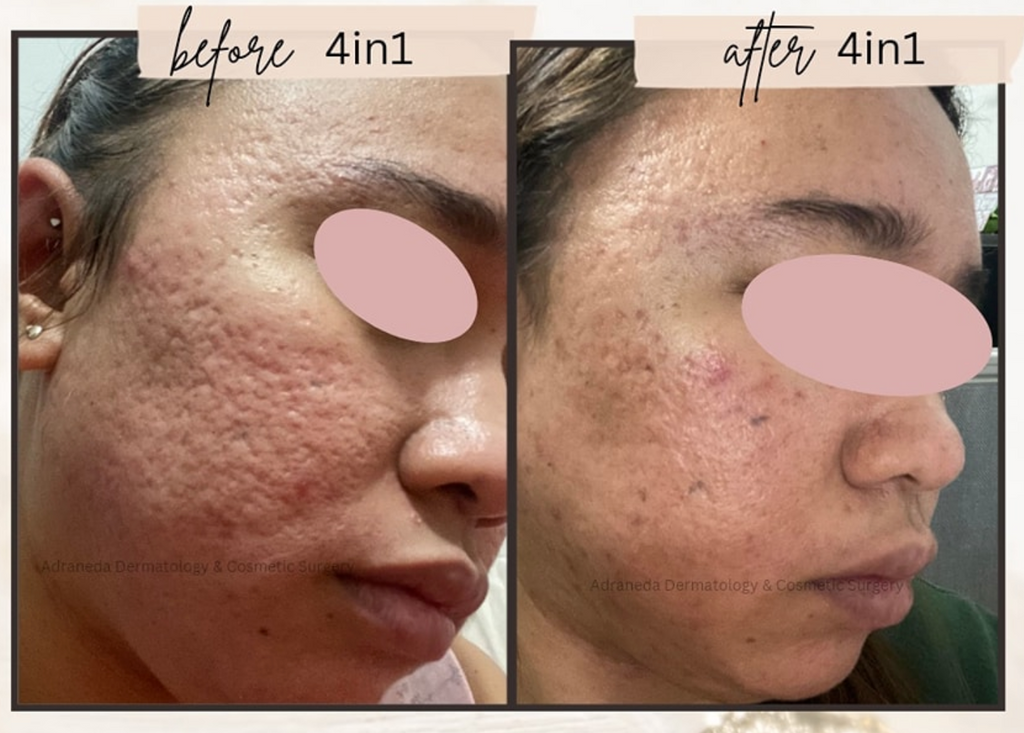Targeted Acne and Acne Scars Treatment: Recover Your Clear Skin
Targeted Acne and Acne Scars Treatment: Recover Your Clear Skin
Blog Article
Comprehending the Different Skin Problem and Reliable Therapy Alternatives for Acne Marks
Acne marks represent a complex interplay of skin disease that substantially effect people' self-worth and total skin wellness. Recognizing the distinct types of acne scars-- atrophic and hypertrophic-- together with their underlying reasons, is crucial for determining effective treatment methods. Different healing alternatives exist, varying from innovative skin-related procedures to all-natural treatments. The efficacy of these therapies usually pivots on tailored assessments by qualified professionals. As we discover the landscape of acne mark monitoring, it comes to be obvious that the journey towards more clear skin may entail greater than just topical solutions.
Sorts Of Acne Scars
Acne scars can materialize in various types, each requiring certain treatment techniques. The two key categories of acne marks are atrophic and hypertrophic marks. Atrophic scars are identified by a loss of tissue, leading to depressed areas on the skin. These marks are further categorized into three subtypes: ice choice scars, which are deep and slim; boxcar scars, which are broader and have distinct edges; and rolling marks, which create a wave-like look as a result of unequal skin appearance.
In comparison, hypertrophic scars arise from an overflow of collagen during the healing procedure, leading to raised locations on the skin. These scars are commonly strong and can vary in color, often showing up red or darker than the bordering skin.

Reasons For Acne Scarring
Marking happens as a result of the body's natural recovery feedback to swelling and injury caused by acne lesions. When acne kinds, it activates an inflammatory reaction, resulting in the launch of numerous cytokines and development elements that advertise recovery. Nonetheless, this process can occasionally result in extreme cells development or poor fixing, resulting in scars.
The main causes of acne scarring consist of the seriousness of the acne itself, period of the lesions, and specific skin types. Extreme inflammatory acne, such as cysts and blemishes, is most likely to result in scarring as a result of deeper cells damage. Furthermore, improper handling of acne lesions, such as selecting or squeezing, can worsen tissue injury and inflammation, raising the possibility of scarring.
Hereditary predisposition likewise plays a substantial role; people with a family members history of scarring go to a higher danger. Skin type and color can affect mark formation, as darker skin tones may experience post-inflammatory hyperpigmentation, while lighter skin may establish atrophic marks.

Treatment Choices for Scarring
Efficient treatment options for acne scarring vary depending on the type and severity of the scars. Generally categorized right into atrophic, hypertrophic, and keloid marks, these problems call for customized techniques for ideal outcomes.
For atrophic scars, which are defined by a loss of tissue, treatments such as chemical peels, microdermabrasion, and laser therapy are typically employed. These methods promote skin revival and stimulate collagen production, thereby improving skin appearance. Subcision, a minimally intrusive treatment, can additionally work by damaging up coarse bands underneath the skin.
Keloid and hypertrophic scars can be much more challenging to deal with. Alternatives consist of corticosteroid injections to reduce swelling and squash the scars. skin rejuvenation treatments. Sometimes, cryotherapy or laser therapy might be suggested to minimize their look
Surgical alternatives are offered for serious scarring, where excision or skin grafting might be needed. It's necessary for individuals to speak with a skin doctor to examine their particular scar kind and go over the most ideal therapy plan. Incorporating several treatments typically yields the most effective results, guaranteeing that each person's distinct skin problem is attended to effectively.
Home Solutions and Natural Solutions
All-natural solutions and natural home remedy can offer an accessible technique for individuals looking for to improve the look of acne marks. Different active ingredients discovered in the home cooking area have shown potential advantages in enhancing skin appearance and promoting healing.
One preferred remedy is aloe vera, recognized for its calming and anti-inflammatory residential or commercial properties. Using fresh aloe vera gel directly onto the marks can aid improve skin hydration and minimize redness. Likewise, honey has all-natural antibacterial and moisturizing high qualities that can aid in mark recovery. It can be made use of as a mask, left on for thirty minutes prior to rinsing.
One more efficient choice is lemon juice, which functions as an all-natural best site exfoliant and can lighten hyperpigmentation. Nonetheless, it needs to be made use of cautiously, as it might create photosensitivity. Oat meal masks are additionally valuable; their mild peeling can assist eliminate dead skin cells while relaxing inflammation.
Vital oils, such as tea tree oil and lavender oil, can even more support scar recovery as a result of their antimicrobial buildings. It is critical to execute a spot test before using any type of treatment over here to guarantee there are no adverse responses. These all-natural services can be a complementary strategy in the trip to decrease acne scars.
Protecting Against Future Scarring
Embracing a positive approach to skin care can substantially decrease the risk of creating future acne marks. One of the vital methods is to manage acne effectively as it develops (acne treatment for sensitive skin). This involves making use of non-comedogenic skincare items and medicines prescribed by skin doctors that target acne without irritating the skin. Regular cleaning, exfoliation, and hydration can assist maintain skin health and wellness and prevent clogged up pores.
Additionally, preventing the temptation to press or choose acne sores is crucial, as this can cause swelling and subsequent scarring. Instead, people ought to concentrate on using topical treatments that promote recovery and reduce inflammation. Active ingredients such as salicylic acid, benzoyl peroxide, and retinoids are known for their effectiveness in taking care of acne and reducing marks.

Finally, maintaining a healthy diet regimen rich in antioxidants and remaining hydrated supports skin regrowth. By applying these safety nets, people can significantly reduce their danger of future scarring and advertise total skin health.
Final Thought
Finally, a thorough understanding of acne scars, including both hypertrophic and atrophic kinds, is vital for reliable treatment techniques. Tailored treatments, consisting of professional treatments and natural remedy, can dramatically boost skin appearance and structure. Safety nets additionally play a crucial role in reducing future scarring. Assessment with a skin specialist stays critical to devise customized techniques that think about private Clicking Here skin types and scar severity, ultimately enhancing the efficiency of scar administration techniques.
Acne scars stand for a complicated interaction of skin conditions that dramatically effect people' self-esteem and overall skin wellness. The two key categories of acne marks are atrophic and hypertrophic scars. These marks are further identified into 3 subtypes: ice pick marks, which are deep and narrow; boxcar marks, which are larger and have distinct edges; and rolling marks, which create a wave-like look due to uneven skin structure.
A comprehensive appointment with a dermatologist can aid determine the most proper intervention, taking into account the person's skin type, scar extent, and overall skin health and wellness.
Consultation with a skin specialist continues to be important to design personalized techniques that take into consideration individual skin types and mark extent, ultimately improving the efficiency of scar management methods.
Report this page